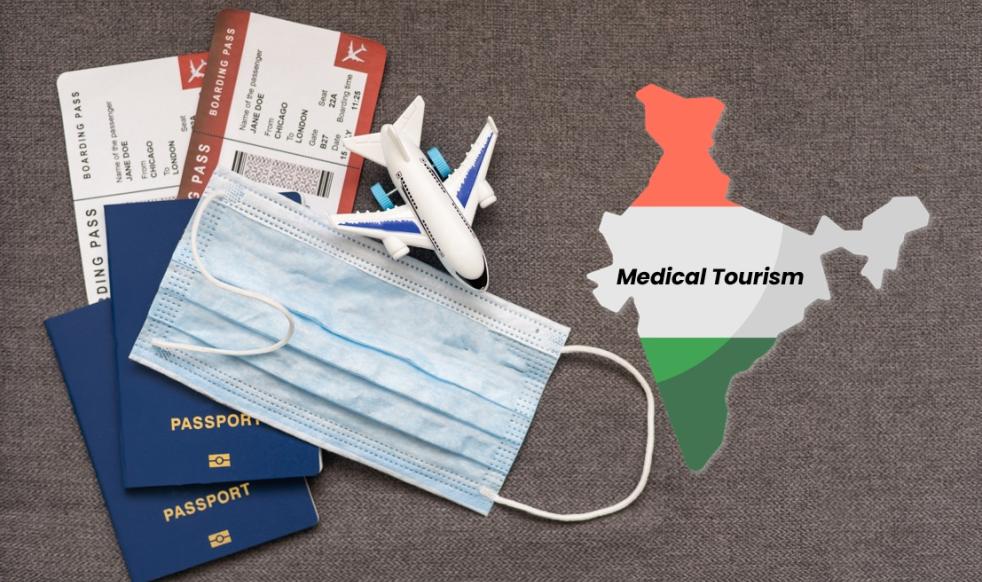In recent years, India has emerged as a premier destination for medical value travel, attracting an increasing number of international patients seeking high-quality and affordable healthcare. The growth of this industry is driven by a combination of cost-effectiveness, exceptional medical expertise, and comprehensive care, all set against the backdrop of India's rich cultural heritage. This editorial explores the key factors fueling this trend and examines the opportunities and challenges faced by medical tourists in India.
A Personal Journey: Ms. Trembley’s Experience
Ms. Trembley, a Canadian residing in the United States, faced the daunting prospect of a knee replacement surgery. The high cost of the procedure in the U.S. led her to explore alternatives. During a conversation with an Indian friend, she learned about India's medical facilities. Discovering that a knee replacement in India would cost between $6,000 and $7,000—a fraction of the U.S. cost and significantly less than in Thailand—piqued her interest. Impressed by the high quality of care and affordability, Ms. Trembley connected with a reputable agency offering comprehensive medical travel services, including travel logistics, medical appointments, and accommodations. Ultimately, she decided to travel to Bangalore for her surgery.

Ms. Trembley’s experience is not unique. She joins approximately 300,000 medical tourists who come to India annually for serious medical care. India’s medical value travel market is expanding rapidly, with a compound annual growth rate (CAGR) exceeding 20%. Key drivers of this growth include cost-effectiveness, world-class doctors, advanced medical facilities, a large English-speaking population, and the unique cultural experiences available before and after medical procedures.
“I must say that the hospital staff was very attentive. Every member of the staff was there to give me encouragement and support. I honestly think that I won’t get that level of care in my own country and that speaks for itself.” - Ms. Trembley after her surgery.
The Competitive Edge
India's allure as a medical tourism destination lies in several compelling factors:
- Cost-Effectiveness: Medical procedures in India are a fraction of the cost compared to Western countries. For example, a cardiac bypass surgery that costs around $144,000 in the U.S. can be done for $3,000 to $6,000 in India.
- Highly Skilled Medical Professionals: India boasts some of the finest doctors and caregivers, honed by high patient volumes and rigorous training.
- Top-Notch Medical Facilities: The country has seen a rise in Joint Commission International (JCI) accredited hospitals, ensuring adherence to global standards.
- English Proficiency: Communication barriers are minimal due to the widespread use of English in the medical sector.
- Cultural Experience: Patients often combine treatment with tourism, exploring India's rich cultural heritage.

Approximately 30% of medical tourists seek cardiac care, followed closely by orthopedics. Other popular procedures include cosmetic surgery, organ transplants, dental care, and ophthalmology. Countries like Afghanistan, Bangladesh, and several African nations are significant sources of inbound medical tourists.
Challenges and Considerations
While India offers substantial benefits, potential medical tourists must navigate several challenges:
- Facility Selection and Trustworthy Partners: Ensuring the right choice of medical facility and reliable travel partners is crucial.
- Continuity of Care: Understanding the implications of post-operative care and follow-ups is essential for a successful recovery.
- Insurance Coverage: The lack of comprehensive international insurance coverage for treatments abroad can pose financial risks.
Future Prospects and Growth
The medical tourism industry in India is poised for substantial growth. According to a report from Research & Markets, the market size was approximately $5.5 billion in 2022 and is projected to reach $9.4 billion by 2028, with a CAGR of 8.5%. This growth is supported by government initiatives, including a $5.3 million allocation for medical tourism promotion in 2022.

India's healthcare landscape is marked by high-quality providers with international accreditations such as JCI and NABH, ensuring stringent quality control and patient safety. However, the industry must address gaps in post-operative care, telemedicine resources, and cultural competency to enhance patient experiences further.
Conclusion
Medical value travel in India represents a promising avenue for affordable, high-quality healthcare. Patients like Ms. Trembley illustrate the transformative potential of this industry, offering not only significant cost savings but also superior care and enriching cultural experiences. As India continues to advance its healthcare infrastructure and services, it is well-positioned to become a global leader in medical tourism, benefiting both patients and the economy. By addressing existing challenges and leveraging technological advancements, India can enhance its appeal and competitiveness in the global medical tourism market.
Amit Gandhi is the founder and CEO of The Insight Tribe - a Healthcare-focused consultancy based in India.

 137 Views
137 Views 0 comments
0 comments
Comments